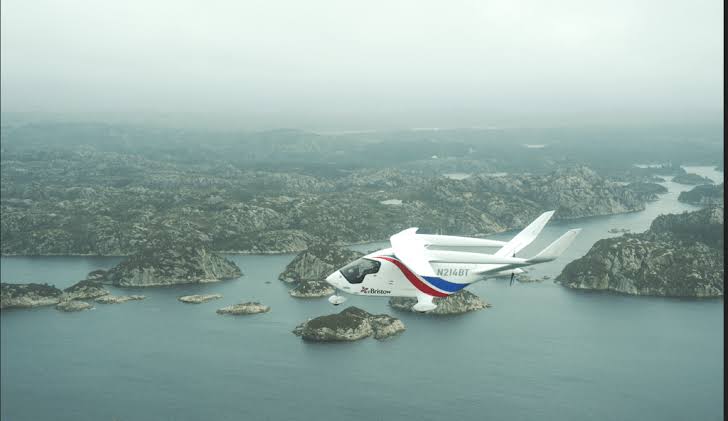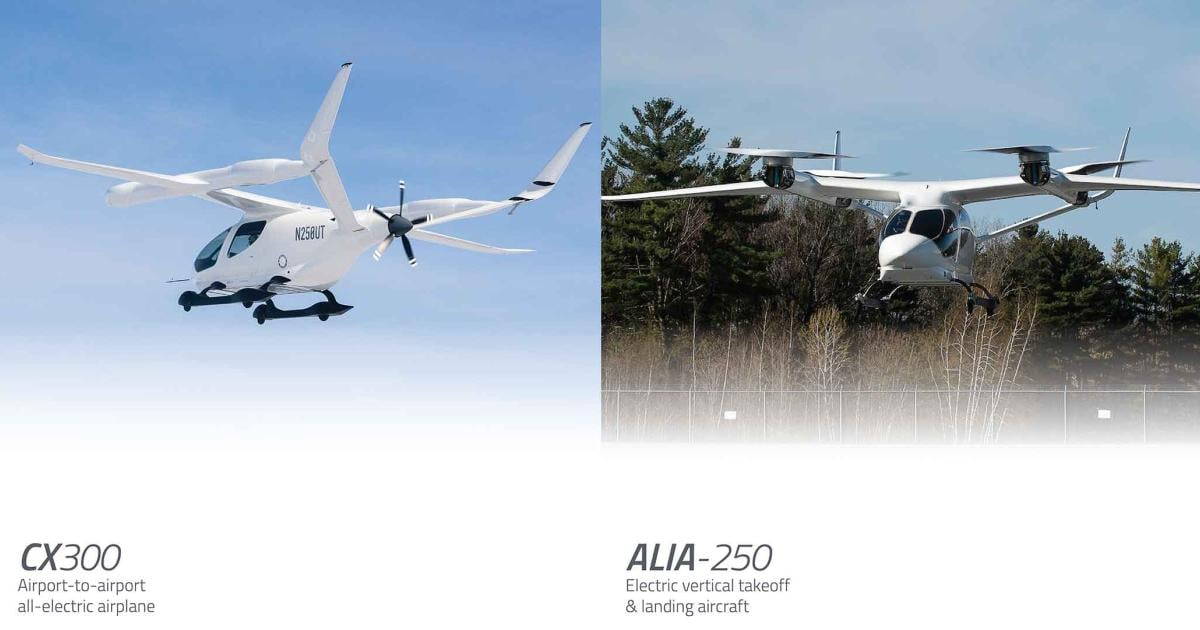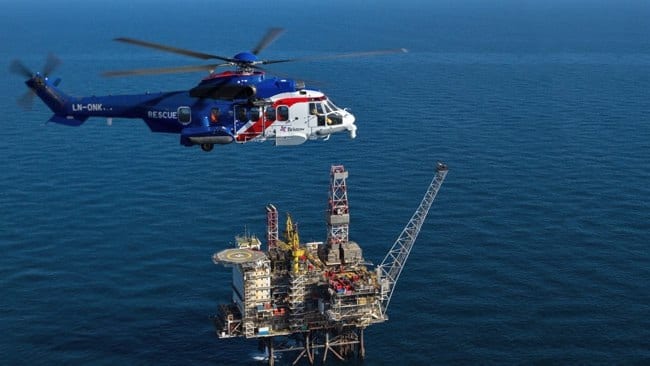 © Avinor/Margareth Aske
© Avinor/Margareth Aske
On September 4, a BETA CX300 flew 160 miles from Stavanger to Bergen, Norway. Two pilots sat up front; behind them, the cabin was empty. An empty airplane is rarely newsworthy. Except the story here wasn’t what it carried, but what carried it
The CX300, BETA’s first production aircraft, is fully electric. Its 661 kWh battery pack, wired to a rear propellor, generates enough lift to carry six people, or 1,200 pounds of cargo. The tech is real and it works routinely. This is much more than a stunt. The same forces that slashed costs and accelerated adoption of EVs and drones are now bearing down on aviation.
The electric aviation era isn’t theoretical anymore—it’s here. Like every disruption, it begins with first movers. In this case, there are three:
- BETA Technologies, the OEM that built the CX300
- Bristow Group, the operator bold enough to put it to work
- Norway, the nation that provided the sandbox
What pushed them each to go first, and what does it mean for the rest of aviation?
Beta
BETA Technologies is a US-based OEM (original equipment manufacturer) in the business of building eVTOLs. eVTOLS are essentially helicopters with three next-gen tweaks:
- They swap jet fuel for battery packs
- The single rotor is replaced with multiple for redundancy and noise reduction
- Once airborne, the rotors turn to enable smooth forward flight
The last two decades have seen hundreds of eVTOL ventures spin up in the hopes of getting to market first. They all see the prize clearly: replicate the winner-take-all benefits that have accrued to OEMs in traditional aviation.
BETA has somehow beaten large competitors like Archer and Joby to certification, driven by two key decisions:
Firstly, they’ve vertically integrated key layers of the stack to iterate quicker and sell a comprehensive platform:
- They build their own chargers to ship with the aircraft
- They build the airframes, battery packs and electric propulsion systems in-house
- All engineers are trained to also fly the aircraft - creating tighter feedback loops
Secondly, they ‘cheated.’
After spending five years getting to the prototype stage with an eVTOL, insights from potential operators converged on a key finding. Many planned to keep operating from airports, even if eVTOLS opened up rooftop and vertiport operations.
This is when BETA forked their flagship ALIA design to create a CTOL (conventional take off and landing) version.
They stripped out the lift system (consisting of four vertical propellers and motors), but kept the same wing, fuselage, battery packs, and pusher tail prop.

This was the key unlock towards faster certification. With most of the airframe classifiable as conventional, two-thirds of eVTOL certification hurdles were already cleared ahead of time.
The rules for eVTOL certification are still in development, but when they’re known, BETA will be way ahead. And this allows them to get countless hours of real world experience and feedback from operators.
Speaking of which…
Bristow Group
 Source: OilNow
Source: OilNow
Bristow is one of the world’s largest helicopter operators. 70% of their business centres around transporting crews and cargo for offshore oil rigs. They’re based in Texas, but have big presence in Nigeria, the North Sea and the Norwegian continental shelf.
Bristow historically branded themselves as a standard helicopter operator. Around 2019, they started repositioning themselves as a VTOL operator. This was a subtle shift followed up by big investments in innovation.
So far they’ve called dibs on an eye-watering number of shiny toys:
- A preorder for up to 50 VX4 eVTOLs from Vertical Aerospace
- An MOU with Brazilian jet manufacturer Embraer to purchase up to 100 of their Eve eVTOL, and help develop their Air Operator’s Certificate (AOC)
- An MOU with Electra.aero for 50 of their hybrid-electric short-take-off & landing (eSTOL) aircraft
They’ve got the right mission profile and the risk appetite to experiment. But they didn’t choose their first deployment to be in Texas or Nigeria. So…
Why Norway?
This year, the Norwegian airport manager (Avinor) and airspace regulator (CAA) teamed up to create a sandbox for next-gen flight. This is essentially a regulatory blessing sweetened with infrastructure allocation in the form of airport gates and charging power. They’re calling it a ‘test arena,’ which sounds gladiatorial, and I love it. Only the strongest platform-operator combo will prove out here before expanding elsewhere. Operators like Bristow can now fly new craft in real-world conditions, and send feedback to OEMs on the performance impact of weather, noise, turnaround and charging time.
Norway has precedent in making forward-looking incentives. Two decades of stable tax credit policy led to world leading EV adoption. Just as Norway used incentives to turn EVs from novelty to norm, it now hopes to do the same for next-gen aircraft.
The airport charging ports and regulations will serve as the carrot for another adoption wave. But, so far, BETA and Bristow are the only ones taking a bite out of the carrot. So where does that leave us?
Implications
Some perspective: while the CX300 is impressive, it’s still tiny compared to the jets that carry most of the world’s air traffic. Flying widebodies on batteries is a problem for the next century. But regional aviation—short, thin routes under 200 miles—are now ripe for disruption within this decade.
Disruption requires first movers. Here we have three coming together to form what Packy McCormick calls an alpha product. On the back of a continually cheapening electric stack (batteries, motors, compute and electronics) EVs and drone have become ubiquitous. To reach economies of scale, they each needed an initial viable product to reach a critical market size. The resulting reps of manufacturing and operation improve the stack faster than research and labs can. For EVs it was the Tesla Roadster. For drones it was the DJI Phantom.
The alpha product for next-gen flight may be born in Norway. First movers can take an alpha product, push it to its limits, and sweat out the efficiencies that later adopters will inherit. However , at first glance, it looks like a raw deal. The late comers benefit from lower cost and less learning curve. Why bother?
In aviation, being first is about more than profit. It’s about influence—on regulators, on technology, and on the public imagination. What do our first movers get for all this effort?
For BETA, the advantage is first-mover credibility: proving an electric aircraft can fly commercially and winning contracts ahead of rivals.
For Bristow, it’s about learning curves and positioning: the chance to shape how advanced air mobility fits into real operations, long before others follow. They get a temporary lead they can hope to keep.
For Norway, they get to continue to lead the decarbonization mission. While support elsewhere is fickle, the Norwegian electorate polls high on offsetting their oil boom with environmental hedges. Norway gets brand leadership, regulatory influence, industrial niches, and preferential early access.
All three first movers hope to make a perennially raw deal a good one.